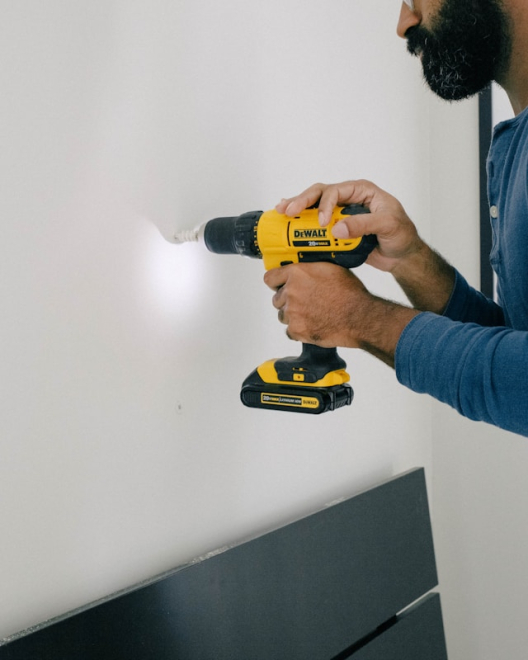- Change theme
Avoid These Common Mistakes During Your Home Addition Project

Undertaking a home addition project is an exciting endeavour that can transform your living space, add functionality, and increase your value.
05:11 23 January 2025
Undertaking a home addition project is an exciting endeavour that can transform your living space, add functionality, and increase your property’s value. However, without proper planning and execution, things can quickly go off course. To ensure your project is a success, it’s essential to be aware of common mistakes and how to avoid them.
Whether you’re considering hiring home addition contractors or managing some aspects yourself, understanding the pitfalls can save you time, money, and stress. Here are the key errors homeowners make during home addition projects and how to steer clear of them.
1. Failing to Set a Realistic Budget
One of the most significant mistakes is starting a home addition without a clear and realistic budget. Many homeowners underestimate costs, leaving them scrambling for funds halfway through the project. Beyond construction expenses, remember to account for permits, design fees, and unforeseen contingencies.
Tip: Allocate an extra 10-20% of your budget for unexpected expenses. Research material costs and labour rates in your area to get an accurate estimate.
2. Skipping the Planning Phase
Rushing into construction without a detailed plan often leads to costly revisions and delays. Every aspect of your project, from design and materials to timelines and legal requirements, needs careful consideration.
Solution: Work closely with experienced home renovation contractors who can guide you through the planning process and help you visualize the final result.
3. Ignoring Local Building Codes and Permits
Overlooking local regulations is a common mistake that can halt your project. Failing to secure the necessary permits or adhering to zoning laws can lead to fines or even having to tear down the work.
Action Step: Check with your municipality to understand the specific building codes and permits required in your area. Ensure your contractor is familiar with these regulations.
4. Hiring the Wrong Contractor
Choosing the wrong contractor can turn your dream project into a nightmare. Contractors lacking experience, references, or proper licensing may deliver subpar work or abandon the project midway.
How to Avoid: Vet potential contractors thoroughly. Check their credentials, read reviews, and request a portfolio of past projects. Always insist on a written contract outlining all terms and expectations.
5. Underestimating the Impact on Daily Life
A home addition project often disrupts your daily routine more than anticipated. Noise, dust, and restricted access to parts of your home can become overwhelming if you’re unprepared.
Preparation: Plan for temporary living arrangements if necessary, especially during major construction phases. Communicate with your contractor to establish a clear timeline.
6. Choosing Style Over Functionality
While aesthetics are important, prioritizing style over functionality can result in a space that looks great but doesn’t meet your practical needs. For example, an oversized living room addition might leave you with insufficient storage.
Tip: Balance design and practicality by working with a professional designer who understands your lifestyle and preferences.
7. Overlooking Energy Efficiency
Many homeowners miss the opportunity to integrate energy-efficient solutions into their additions. Neglecting this can lead to higher utility bills and reduced comfort.
Best Practice: Incorporate energy-efficient windows, insulation, and appliances into your design. These investments not only lower operating costs but may also qualify you for government rebates.
8. Failing to Account for Future Needs
Designing solely for your current needs can limit the long-term value of your home addition. Families grow, lifestyles change, and housing trends evolve.
Plan Ahead: Consider how your addition will serve you in the future. For example, a flexible space that can function as a home office today and a guest room tomorrow offers greater versatility.
9. Neglecting Landscaping and Exterior Integration
A common oversight is focusing entirely on the interior of the addition while ignoring how it integrates with the exterior. Poor landscaping or mismatched exteriors can detract from your home’s overall appeal.
Pro Tip: Work with your contractor to ensure seamless integration of the addition’s exterior with your existing home. Don’t forget to budget for landscaping to enhance the curb appeal.
10. Micromanaging the Project
While it’s important to stay involved, micromanaging every detail can strain the relationship with your contractor and slow progress. Trusting the professionals you’ve hired is key to a smooth process.
Recommendation: Schedule regular updates with your contractor to stay informed without overstepping boundaries. Let their expertise guide decisions within the agreed plan.
Final Thoughts
Avoiding these common mistakes can make your home addition project a rewarding experience. With proper planning, a reliable contractor, and attention to detail, you can create a space that enhances both your home’s functionality and value. By understanding the potential pitfalls and addressing them proactively, you’ll be well on your way to achieving your dream addition.
